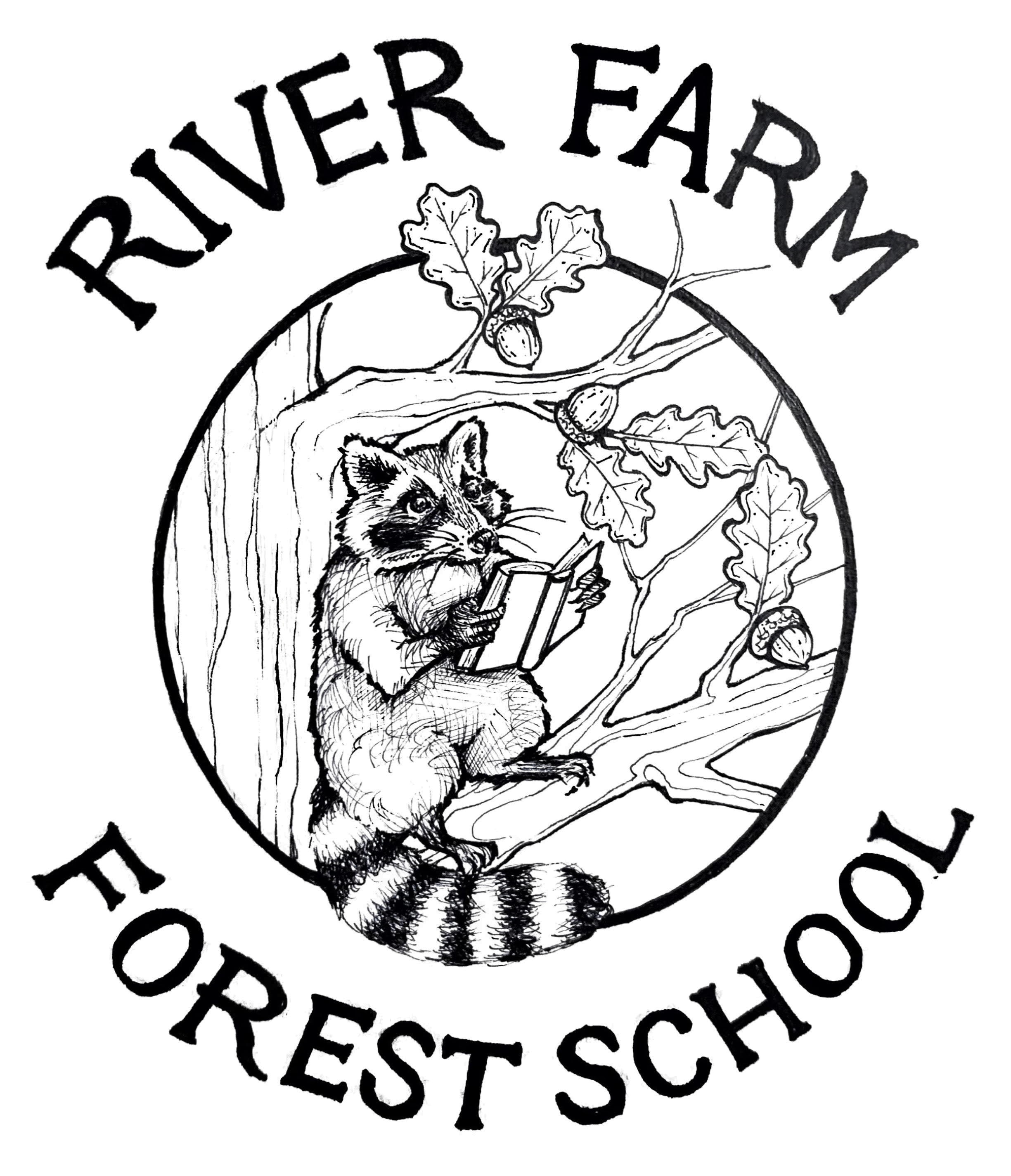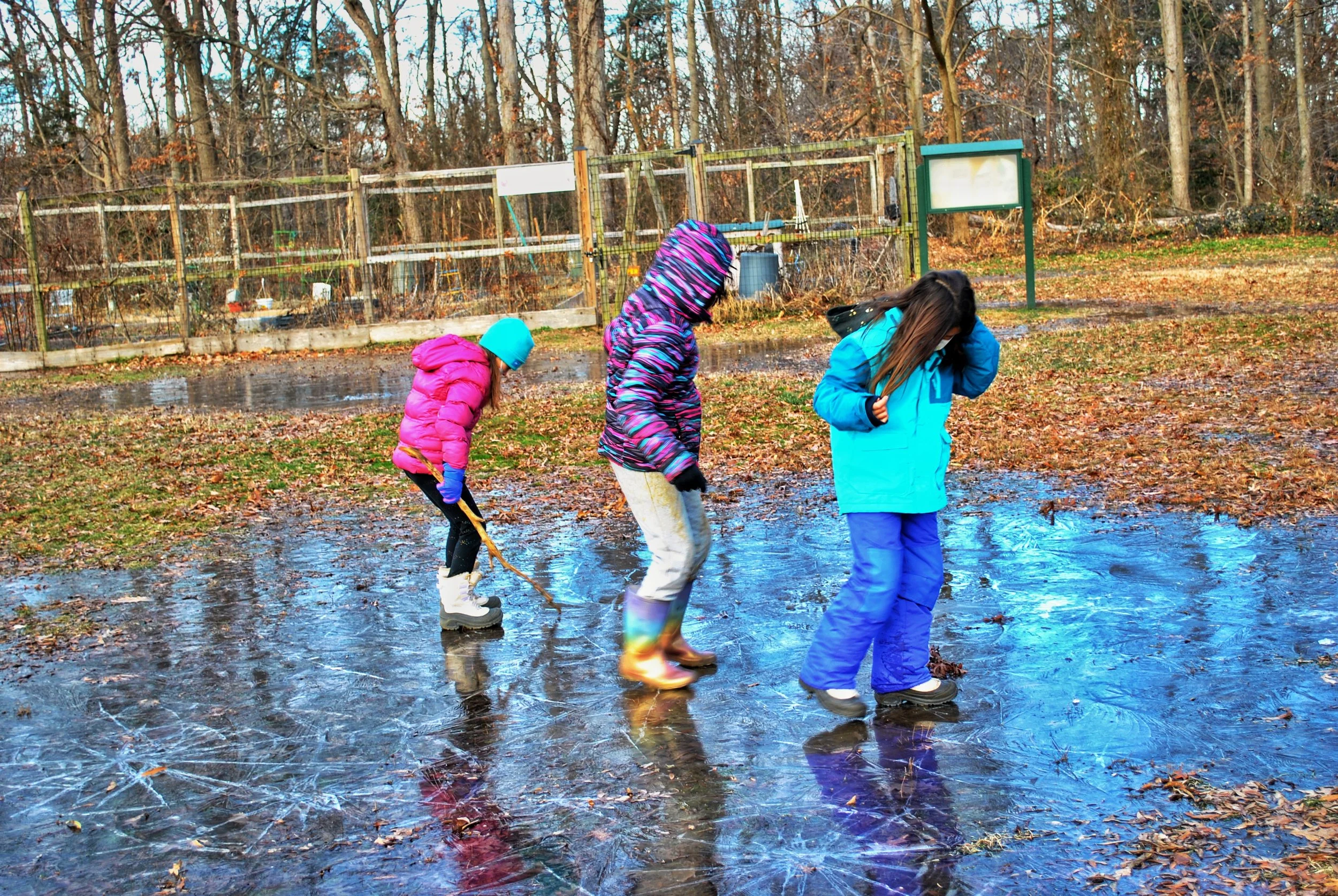The River Farm Forest School Story
Weary of large class sizes, "teach-to-the-test" lessons, and the lack of opportunities to interact with nature during the school day, two Alexandria parents set out to create a new educational experience for students in the Northern Virginia area.
In December 2013, they founded the River Farm Cooperative – the first daily, parent-owned, teacher-led cooperative program in the DC area. The cooperative was named after George Washington's River Farm since the co-founders' homes were located on the site of the first president's farm. They also admired the founding father’s innovative thinking, and the words "river farm" evoked a focus on nature that would be pivotal to the co-op's philosophy.
After eight months of intense planning and preparation, the co-op opened in September 2014 with a single, mixed-age class of 13 students. The following year, the co-op doubled in size, splitting into two mixed-age classrooms (the Upper Elementary class and the Lower Elementary class) led by two teachers.
Since YEAR, we've expanded to include a Kindergarten/1st Grade class and a Middle School group in addition to the Uppers and Lowers.
We are a cooperative school, and just as our leaders change, our methods evolve to address the needs of the current community.
Our student-to-teacher ratio is 10:1 for each mixed-aged classroom.
RFFS educators’ average teaching experience is 14.75 years.
Kindergarteners spend 60% of their day outside learning. Lower Elementary spends 40% and Upper Elementary spends 30% of their day in outdoor education.
Why multiage classrooms?
The Association for Childhood Education International (ACEI) emphasizes the transformative benefits of multiage classrooms, creating a nurturing and inclusive learning environment. In these classrooms, a unique sense of community flourishes, akin to a family. This dynamic fosters a supportive "community of learners," where children care for and assist each other, moving beyond the conventional student-teacher dynamic.
A standout feature of multiage settings is the opportunity for older students to take on mentorship and leadership roles. This not only enriches their own learning experience but also provides younger students with accessible role models, showcasing advanced problem-solving skills. Such interactions enable younger children to tackle challenges they might not manage alone, enhancing the older students' independence and competence in the process.
This environment shifts focus from competition to cooperation, promoting a spirit of teamwork. Children learn to view peers as collaborators, aiding each other empathetically and individually, a stark contrast to the competitive atmosphere often found in same-grade classrooms.
Children in multiage classrooms are encouraged to take charge of their learning, fostering a sense of ownership and self-direction crucial for lifelong learning. The continuity of having the same teacher for several years further strengthens this approach, allowing educators to develop a deep understanding of each child’s unique strengths and needs, and to tailor their support accordingly.
The multiage approach recognizes the individuality of each student, respecting their distinct learning paces and abilities. This contrasts with the uniform expectations in same-grade classrooms and avoids the detrimental effects of labeling students based on ability. By focusing on individual growth rather than standardized benchmarks, multiage classrooms alleviate the pressure of retention, allowing students to learn without the fear of being held back. This flexible and empathetic approach nurtures students as progressively successful learners, ensuring a more natural and stress-free educational journey.
We’re An All-Weather School
At River Farm Forest School, we are prepared for all weather. Our snow days look a bit different than those at other schools. Our students gear up and hit the hiking trail in winter coats, hats, and gloves. In the cold weather months, you will often see RFFS kids learning to properly start and extinguish a camp fire. Occasionally, we cook over the fire, too! Can we say s’mores?
When the snow melts, our students put on their rain boots and go out to learn about streamflow and runoffs. We recommend our students have rain and snow boots, wool socks, and a change of clothing on hand at all times!






